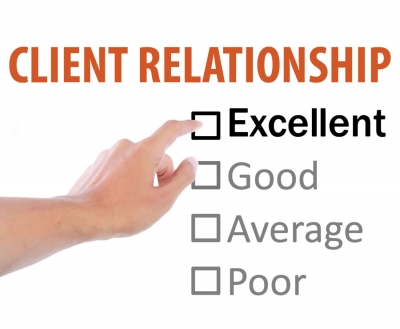
When client relationship checkups are not performed regularly, the relationships…
The story goes that when Palmisano met with their CEO, he opened by saying, "My people tell me we have an 'A' relationship with your organization." My client's CEO responded, "Well, my team tells me your relationship with us is a 'C.'"
Fortunately, this was a wakeup call for the IBM team to dramatically improve the relationship with my client. Within a year, the relationship was indeed an "A," and today the company views IBM as a key trusted partner in operating their business.
IBM is a great company that has been quite innovative in the way it builds long-term client relationships. But as this story illustrates, even well-managed firms can dramatically misread the health of a key client relationship. The successful firms I work with all have some type of process in place to determine the health and strength of their most important client relationships. They seek feedback at multiple levels. They access the client's views using a variety of channels – through the relationship manager, during senior executive visits, using independent surveys, and in client forums. Here are the remaining five questions to help you check the vital signs of your client relationships:
Fortunately, this was a wakeup call for the IBM team to dramatically improve the relationship with my client. Within a year, the relationship was indeed an "A," and today the company views IBM as a key trusted partner in operating their business.
IBM is a great company that has been quite innovative in the way it builds long-term client relationships. But as this story illustrates, even well-managed firms can dramatically misread the health of a key client relationship. The successful firms I work with all have some type of process in place to determine the health and strength of their most important client relationships. They seek feedback at multiple levels. They access the client's views using a variety of channels – through the relationship manager, during senior executive visits, using independent surveys, and in client forums. Here are the remaining five questions to help you check the vital signs of your client relationships:
- Are You Treated With Respect –
Like an Important Advisor?
This is hard to quantify, but you usually will know in your gut if this is the case. I had a client who I felt did not value me. He asked me to help teach his senior partners how to be better trusted advisors to their clients. But ironically, he did not want a trusted advisor himself – he wanted an arms-length "expert" who would be at his beck and call. I finished the project and moved on. - Is Working with This Client Satisfying
and Rewarding?
Some clients just drain you. They are overly demanding, they check up on your every move, and they basically drive you crazy. Sometimes, you are also stuck with a client who is too low in the organization to really appreciate the impact you have. This is not a healthy relationship. Life is too short – if you cannot fix a situation like this quickly, you should get out and double-down on more promising clients. - Is the Relationship Economically Rewarding
for You?
You could have a great personal relationship with a client, but for a variety of reasons be losing money on the work! Sometimes, weak profitability is your fault – you have underestimated the scope of the work or underpriced it. But sometimes it is a sign of a client who knows the cost of everything and the value of nothing. - Are You Having an Impact
and Helping?
In the best relationships, you have a clear and positive impact on the client's organization. You help the client improve their business. If, for whatever reason, this is not happening – it is a warning sign. Are you working on peripheral issues that are not really important to the client? Are you stuck too far down in the organization? Is the client ignoring your recommendations? Is your good advice simply falling on deaf ears? - Does Your Client Refer
Your Company?
Active word-of-mouth referrals, arguably, are the ultimate sign of a good relationship. Are you getting referrals? Would your client give them to you if asked? How enthusiastically would your client recommend you? A testimonial is one thing – it is passive – but an active referral is a sign of a very different level of satisfaction and delight with your services!
Just as you should not make assumptions about or neglect your own health, you should not do so when it comes to the health of your client relationships. Each year, go through this checklist and rate each of your relationships. Are you weak, average or strong on each of these ten points? Better yet, rate yourself and then ask these same questions to your client. Then, compare the answers. Through quality communication and thoughtful power questions, you can strengthen your client relationships and add value to them at the same time!